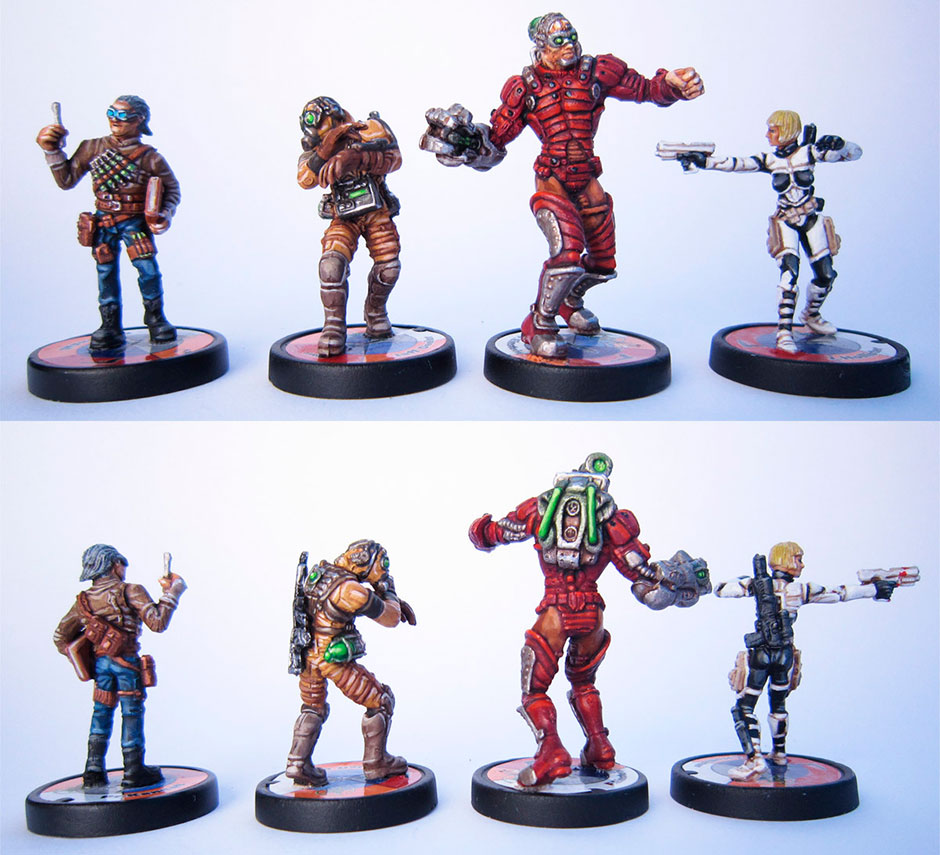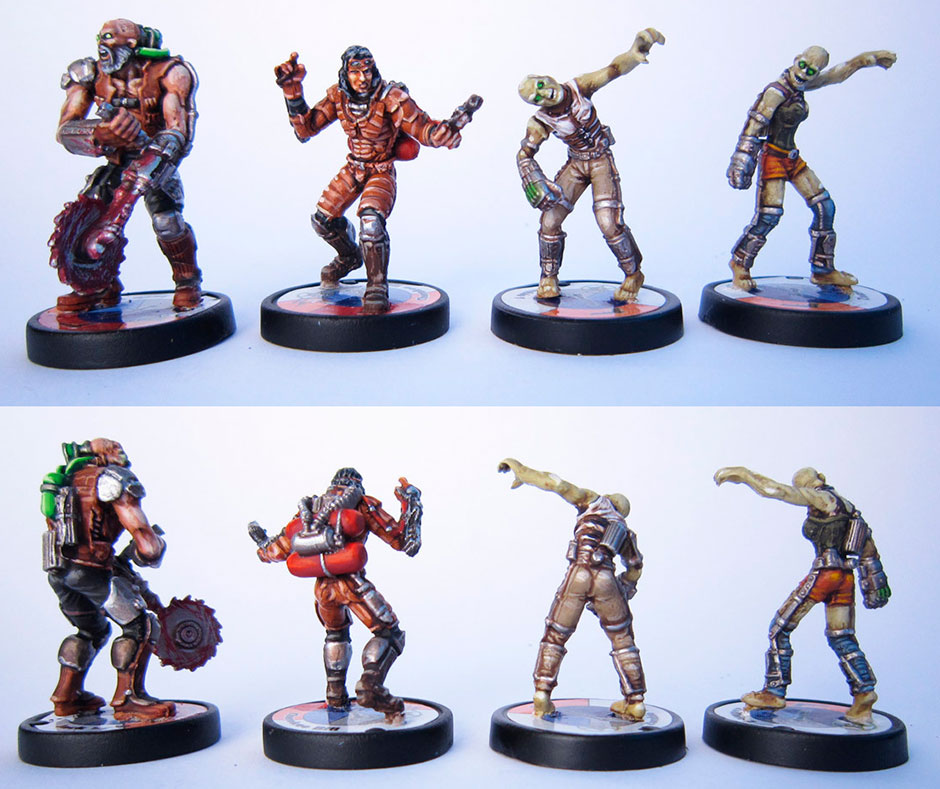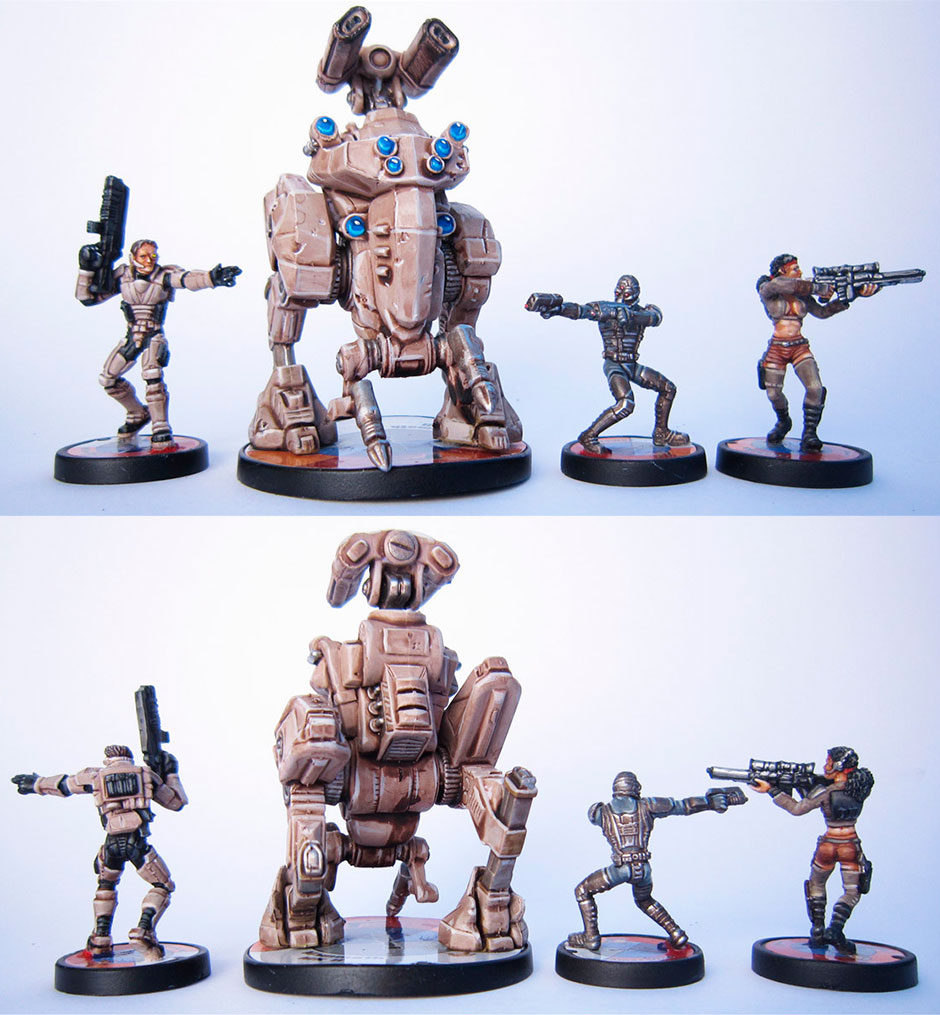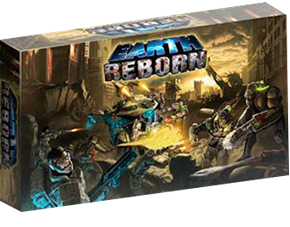500 years after the devastation of the Earth, two factions arise from their underground cities.
I must admit it took me a little time to get my head around the quite original activation and combat systems, but once I understood what was going on it all clicked smoothly into place. The basis of the game are Order tiles and Command Point counters. Basically, whenever you activate a character you draw an Order tile from the bag, add it to the selection of tiles and Command Points you have hidden behind your little player screen, then choose a tile to assign to your character. You then assign Command Point tokens to actions on the tile. Each tile has four order types on it—either close combat, move, interact, search, or shoot actions, with a number on each type shown.
In short, if you love an extremely thematic game with a lot of tactical possibilities, detail, and endless opportunity for expansion, you’ll love Earth Reborn.
You assign CP counters to the orders you want your character to take, as he takes them. For example, you may want to assign 2 CP to a move action, so if your character has a movement value of 5, he could move 10 squares. Then you could assign 1 CP to a close combat action, allowing your character to attack an adjacent enemy. Then you could assign another 1 CP to another move action so he could run off another 5 squares afterward!
You can easily see that this ingenious system gives you an incredible amount of flexibility during your turn—it’s not just ‘move then shoot’. However the selection of tiles and the amount of CP counters you have also give you built-in limits which can be incredibly frustrating and really get you thinking tactically. You may have plenty of options for running around at high speed, but very few for delivering accurate fire or strong attacks, for example. You have to manage your options carefully for the optimal result. This makes every game interesting and different.
I won’t go into all the specifics of the combat system—not to mention all the other possibilities for manipulating equipment, spying, searching for items or even capturing your opponents and torturing them for information!—but suffice it to say they all flow very smoothly and once you get the hang of the Iconographic Phrasing System (I.P.S.—these designers love their acronyms!) you can see at a glance how each special ability works.
In short, if you love an extremely thematic game with a lot of tactical possibilities, detail, and endless opportunity for expansion, you’ll love Earth Reborn. It’s definitely a game for ‘game hobbyists’.
The latest version of this summary includes my larger, clearer, redesigned versions of the character cards.
 My custom-made foamcore box insert. Note the custom character cards and removable counter tray. I added the green plastic marker as an Initiative token and the figures come unpainted in the box.
My custom-made foamcore box insert. Note the custom character cards and removable counter tray. I added the green plastic marker as an Initiative token and the figures come unpainted in the box.



Your guides have helped my gaming buddies and I though a large number of our games. A huge thank you.
Will you be releasing a foam core guide for Earth Reborn at any point?
Great to hear! I do have one done, but my copy is in storage at the moment after a recent move to another country and I’m not sure when I’ll be getting my hands on it again. But when I do, I’ll definitely plan up the box insert. Sorry I can’t be more definite at this stage.
Oh man, the redesigned character cards look soooo much better. Thanks for this one-
I’d like to use your cards but I’d want them to be printed professionally (Linen Finish, Rounded Corners, etc). Is there a recommendation?
I’m in New Zealand Salim, I don’t think anyone around here would help you much! 😉 Check out a local printer.
Try printerstudio.com
thanx guys! at last i can play earth reborn
+1 for the foam core plans when you are able to get your copy back. I’ve already made use of your other plans which are excellent. Thanks!
Agreed, would love to see some foamcore plans for this.. might even just give it a crack myself, as I don’t rate the box insert at all. It was a good try by the publishers, but it’s just a pain to be honest!
Have a go, as it might be a while before I get my copy back I’m sorry!
I believe I found a mistake in your summary
“End of Round
When the active player has performed one of the above actions,
it is the end of his round of Activation. Close all Sliding doors
that have been opened this Activation round.”
According to the scenarios book page 18 in the hint box the sliding door closes after activation of a single character activation not at the end of the activation phase.
or did i misunderstand your summary?
Yep, it’s correct: the activation *phase* consists of all the player’s activation *rounds*. So sliding doors opened during a character’s single activation round close at the end of that round. Then the next player has his activation round. When all activation rounds are finished, it is the end of the phase.
Great paint guide, great break down, really great rules summary and reference. love them cards btw, great game! Good work, oh yeah said before “its like life really” ;-). I do have one question about the removel of the figure from the base, i really like that idea. I just started to paint, My bases are realy messy, so it would be nice to remove the figures from there bases. Maby you can explane to me how you did it?
Great to hear you’re finding all this useful. Unfortunately my copy is in storage and I haven’t played the game much, after all this prepping effort! I can’t remember how I got the figures of the bases – it was quite some time ago now – but it probably involved a sharp new craft blade or scalpel and great care. As I mentioned, this is very difficult to do without damaging the sticker, so in hindsight it really wasn’t worth the bother.